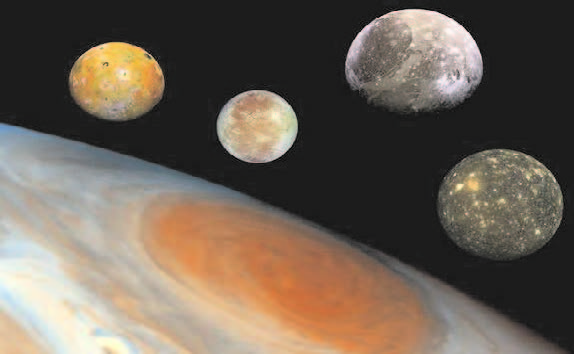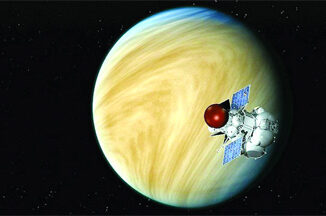
WASHINGTON (TIP): The mysterious dark material coating some geological features of Jupiter’s moon Europa is likely sea salt from a subsurface ocean, discoloured by exposure to radiation, NASA scientists have found.
Presence of sea salt on Europa’s surface suggests the ocean is interacting with its rocky seafloor – an important consideration in determining whether the icy moon could support life.
“We have many questions about Europa, the most important and most difficult to answer being is there life?Research like this is important because it focuses on questions we can definitively answer, like whether or not Europa is inhabitable,” said Curt Niebur, Outer Planets Programme scientist at NASA Headquarters here.
“Once we have those answers, we can tackle the bigger question about life in the ocean beneath Europa’s ice shell,” said Niebur.
For more than a decade, scientists have wondered about the nature of the dark material that coats long, linear fractures and other relatively young geological features on Europa’s surface.
Its association with young terrains suggests the material has erupted from within Europa, but with limited data available, the material’s chemical composition has remained elusive.
“If it’s just salt from the ocean below, that would be a simple and elegant solution for what the dark, mysterious material is,” said research lead Kevin Hand, a planetary scientist at NASA’s Jet Propulsion Laboratory in California.
One certainty is that Europa is bathed in radiation created by Jupiter’s powerful magnetic field. Electrons and ions slam into the moon’s surface with the intensity of a particle accelerator.
Theories proposed to explain the nature of the dark material include this radiation as a likely part of the process that creates it.
Previous studies using data from NASA’s Galileo spacecraft, and various telescopes, attributed the discolourations on Europa’s surface to compounds containing sulphur and magnesium.
While radiation-processed sulphur accounts for some of the colours on Europa, the new experiments reveal that irradiated salts could explain the colour within the youngest regions of the moon’s surface.
To identify the dark material, Hand and his co-author Robert Carlson, also at JPL, created a simulated patch of Europa’s surface in a laboratory test apparatus for testing possible candidate substances.




Be the first to comment